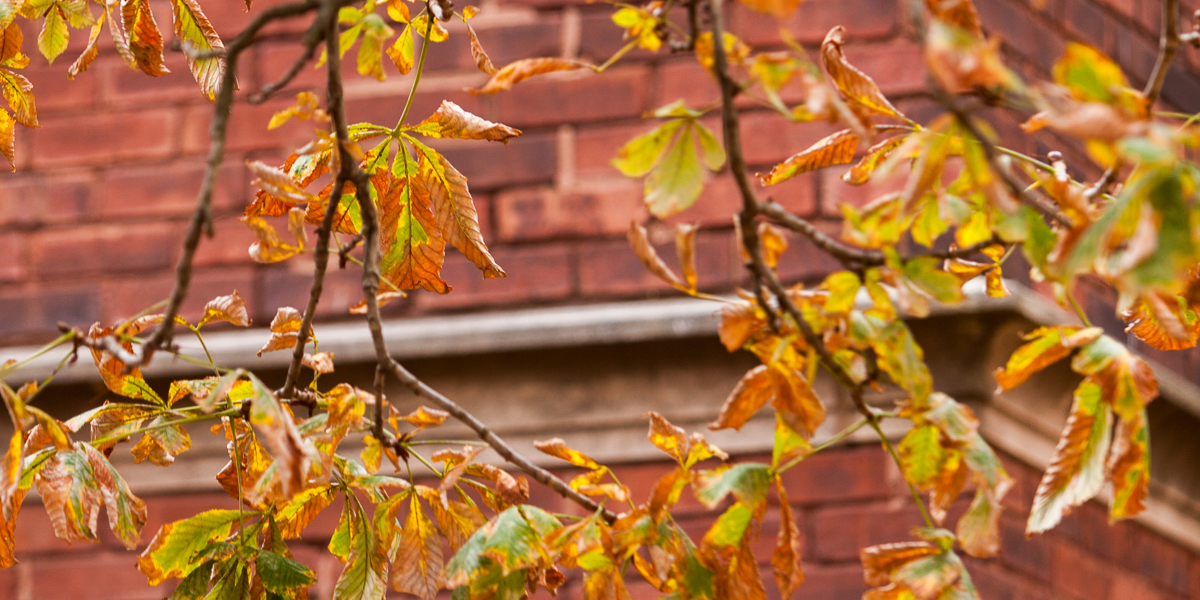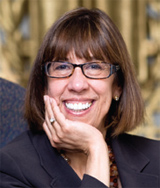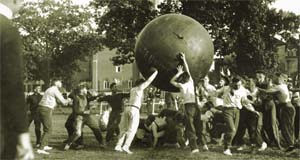

Venture Boldly

 Navigating Election 2012
Navigating Election 2012
Every four years, the nation engages in an important exercise of
democracy -- a presidential election -- and I can think of no better place to be in an election year than on a liberal arts college campus. For most U.S. students, this is their first opportunity to vote in a presidential election; for international students, their first opportunity to observe this nation up close in the midst of our disorderly and noisy campaign process.
The choice that lies ahead engages many questions of deep import, questions whose answers are to be found in the day-to-day practice of liberal arts education. The classroom is a wondrous laboratory for civic engagement: to know how we should vote on energy policy, we must become environmentally and economically literate; to know how we should approach questions on stem cell research or contraception, we must develop a working understanding of the cell and human anatomy; to know how best to provide health care for all, we must study economics and politics, but also ethics. To avoid being manipulated by campaign ads, we must become close readers of visual texts. To chart America's foreign policy, we must expose ourselves to the history, politics, and cultures of other nations.
Much of this learning will happen in coursework. But much will also happen in Rock the Vote activities,
theatre performances, residence halls, student government, student activities, athletics, and in all the moments when we talk with one another. And in these different arenas, we hear different voices and
competing claims. We mobilize the critical thinking skills developed in the course of a liberal arts education to sort out the meaning in the cacophony of claims to truth and demands for our votes.
It is especially important that we practice one of the most important arts of democracy: the extraordinarily difficult act of listening. Our Knox education has taught us to listen respectfully to others, especially when someone very different from us is talking; to listen critically to ourselves; to test assumptions against evidence; and to open our minds to those with whom we disagree. I encourage each of you to check the Knox website regularly. Knox students will be blogging about their experiences in the interdisciplinary course Election 2012, and we'll be highlighting both current students and young alumni working on the political front-lines.
Let the discussions begin!
Teresa L. Amott

What is Knox's Personality?
This is a question that we asked ourselves numerous times as we undertook the first redesign of Knox Magazine in a decade. While it wasn't the only question or factor that informed the project, it was a question we returned to time and again as we worked to update the overall look and contents of the magazine.
So, what is Knox's personality? We hope that the newly designed magazine that you're holding helps to answer the question. Thanks to feedback from alumni and friends through recent reader and alumni surveys, we learned that (not surprisingly) class notes remains the most popular section of the magazine, but that readers also want to see more photos, learn more about individual members of the Knox community, find out what's really happening on campus -- the good news and the bad. In short, they wanted to see more personality!
Knox is a college deeply rooted in its storied history, yet reaching for new educational horizons. It is a college made up of diverse individuals joined together into a close-knit community. It's faculty and students learning together; it's alumni returning to campus. It's Pumphandle, Flunk Day, RepTerm, and the prairie burn. It's been called quirky, intellectual, and engaged. Knox is all of these things and more -- and our goal is that this magazine reflects as much of Knox's personality as possible in a print publication.
We hope you enjoy what you see on the following pages -- and that you learn just a bit more about campus life today, the values our community holds important, and the individuals you'll meet on and off campus. And this issue is just the first step. We hope that Knox Magazine will continue to evolve and that you'll help us along the way. We know that the Knox community isn't shy about expressing its opinions -- please tell us what you think.
Megan Scott '96
Kudos, Criticism, and More on the 175th Commemorative Issue
Excellent describes the spring edition of the magazine. Or, as my wife (whose only tie to Knox is me) says, "a keeper." As you well know, though, your primary audience consists of graduates of an excellent college who learned to read and think critically. So, herewith comments on one, possibly two, factual errors, and a question of emphasis and possibly one of omission. The factual error concerns the statement on page 18 that at the time Bill Hall pledged Phi Sigma Kappa, the national organization of Tau Kappa Epsilon "reportedly also had a discriminatory pledge policy." It did not, although when informed that the Knox chapter was considering pledging Hall, several national officers and chapter
alumni strongly opposed the action.
I question also the photo of a pushball contest on page 8. The buildings in the background are not ones I recognize as part of the Knox campus. The photo is identified as 1917, and my memories of the campus basically begin in 1950, but I believe there was no change in the major structures in the intervening 33 years.
The question of emphasis involves the 1954 car ban on pages 36-37. There is at best only an inference as to the cause of the accident that took the lives of three Betas and led to the ban. The fact is they died in a flaming crash while returning from a beer drinking contest with members of Phi Delta Theta. As to the omission, both my wife and I noted the absence of any mention of the controversy over abandonment of the Old Siwash name, to be replaced by Prairie Fire. But, I know that you had far more material than you had space to publish. This magazine, though, might be a starting point for a more thorough history, following Professor Hermann Muelder's Missionaries and Muckrakers covering the College's first 100 years. Is there a historian ready to undertake From Muelder to the Millennium: The Further History of Knox College (a title I suggested to Carley Robison [College archivist] a few years ago)?
Those comments, I believe, demonstrate that I read the magazine thoroughly and support my initial judgment: an excellent job.
-- Jim Dunlevey '54
Editor's Note: Thanks so much for your comments and questions. See the list of corrections below regarding the pledge policy of Tau Kappa Epsilon and information on the pushball photo.
I just had the opportunity to read the latest Knox Magazine. Well done. I see mention of fraternities at Knox in a few of the articles, but I believe a separate section/focus on fraternities at Knox would have been appropriate and of interest.
-- John Gorski '73
I certainly enjoyed the issue celebrating Knox's 175 years. Yes, I wore a beanie. The other legend of my era was the "Ma Bickerdyke" legend. The women's residence hall was located between Cherry and Broad Streets. We were told that if you walked your virgin girlfriend past Ma Bickerdyke at the stroke of midnight she would drop the wounded soldier and sprint to Broad Street and fire the Civil War cannon.
-- James Rossie '56
A wonderful nostalgic edition. It fits the occasion so well.
And, to our delight, we opened page 17 to a wonderful surprise: A photo of Carole Jean Waby Dunsing '54 and Benjie [Ben C. Christenson, Whiting Hall nightwatchman, 1931-1957] in Whiting Hall. Carol and I were married in 1955 and continue to enjoy a marvelous life in Richmond, Virginia....Thanks so much for this issue and the picture that triggers so many good memories.
-- Dick (Richard) Dunsing '53
I've had the spring magazine sitting near my desk as a reminder to tell you that I was very impressed. It's a great commemorative issue, which I'm sure left more on the cutting room floor that you'd have loved to include. My skimming of it delivers to me a real sense of the rich fabric of Knox's past and present, as well as the momentum for a bright future. As a parent, I appreciate even more the Knox my daughter will soon call alma mater.
Way to go.
-- Mickey Munlevy
I am a parent of a sophomore at Knox -- who loves every moment of her time there -- and recently received a copy of your commemorative issue in the mail. I thoroughly enjoyed reading it and, having done my education in the United Kingdom, found many of the items fascinating.
Kind regards.
-- Jane Harvey
Thank you so much for the wonderful Spring 2012 edition of the Knox Magazine! And congratulations to Knox College celebrating its 175th year! I just wanted to let you know that I thoroughly enjoyed the latest magazine. In fact, I read it non-stop from cover to cover! This edition was both educational and nostalgic. I learned many things about Knox that I hadn't known and reminisced about my experience there. Many of the traditions were before my time, but I do remember a food fight or two and the lost sport of "traying." You make me so proud of being a Knox graduate.
Here's to 175 more years!
-- Ann Hutchcroft Weber '79
The recent edition of the Knox Magazine is an 11 on a 10 scale. The "From the Editor" piece: great
introductory message of "This is only the beginning." And so it is-prefaced by an incredible past as the remainder of the magazine portrays.
Dr. Amott's message: brilliant! In a short period of time, she not only has captured the Knox soul but also has tied it beautifully to the heart and mind of liberal arts education.
The archive articles from ". . . Scraps" to ". . . Revolution" stir the memory banks, produce lots of smiles, and affirm one's belief in the incredible value of all that is Knox. What wonderful history from which to draw life's present and future value.
And great to see our earth in Green Oaks, the storied careers of such a renowned alumni base, and my own Knox hero, Harley Knosher, receive the acclaim so deserved.
Finally, John Heyer's lens of "The Way to Knox" through Old Main captures the foundation of buildings, trees, sun, and shade that continue to offer us a peek at the influence Knox has had on all of our pasts, presents, and futures.
Thanks for a job well done. Hail Knox All Glorious.
-- Topper Steinman '70
What a wondrous publication! I read every word in one sitting, beginning with Teresa's eloquent and touching description of our little College on the Prairie with its gigantic impact on people and the world, to the stories of bygone days, many of which I remember and was a part of (especially the photo of the archery team!). Nostalgia is the word that comes to mind, as does poignancy, in the pleasant sense of the word. . . .
So, I thank you for giving me a chance to take a delightful stroll down memory lane. It was similar to the stroll I take every time I sing the Knox Hymn . . . the song that reminds me of days gone by . . . of the long, long road that always leads to Knox, where memories do indeed burn bright. Kudos and thanks to all of you.
-- Mary Kent Knight '60
Honoring Herbert Griffith
My maternal grandfather was Professor Herbert E. Griffith, after whom Griffith Hall is named.
He was hired by Knox in 1897 to establish the new chemistry department and served as chair for nearly 25 years. Griffith was a driving force on the campus, serving as acting dean, registrar, and head of the Knox academy. He was the first professor to be elected president of the Federation of Illinois Colleges, an office usually held by a college president. He also served as advisor to the Superintendent of Public Instruction in the State of Illinois. He and Professors Neal and Longden helped design the biology, chemistry, and physics quarters in Davis Hall.
After my grandfather's premature death in 1920, Knox students established the Herbert Eugene Griffith Professorship. Every student from the Classes of 1921 and 1922 (420 total) pledged, with an average gift of $90, showing how greatly he was respected by the students as well as faculty.
This information is detailed in the book Science and the Scientists of Knox College by Billy W. Geer, Michael A. Dunn, and Rebecca L. Swanson, published in 1997. His portrait hangs in the chemistry department at Knox.
With reference to the article in the last Knox Magazine about Knox notables and Hope Cemetery, I will add that he and my grandmother and uncle are buried in Hope Cemetery in Galesburg.
-- Caroline Andrews Porter Evans '58
The Mystery of the Pushball Photo Several alumni contacted the magazine regarding the photo of the 1917 pushball contest featured on page 8 of the last issue. All questioned whether or not the photo was taken on the Knox campus, as many of the buildings featured in the background didn't quite look like any of our current or historic buildings. The photo and description came straight out of the 1917 edition of The Gale, but we thought we'd investigate, just in case.
Several alumni contacted the magazine regarding the photo of the 1917 pushball contest featured on page 8 of the last issue. All questioned whether or not the photo was taken on the Knox campus, as many of the buildings featured in the background didn't quite look like any of our current or historic buildings. The photo and description came straight out of the 1917 edition of The Gale, but we thought we'd investigate, just in case.
Well, thanks to the sleuthing skills of our photographer, John Williams '12, we found out ... that our alumni were correct. It is impossible for this photo to have been taken on the Knox campus. While some of the buildings resemble George Davis and Whiting Halls, the placement of the buildings simply doesn't make sense. Nor does the architecture match.
We aren't quite sure how this image came to be attributed to Knox, but if any of our history buffs out there can help us solve the mystery, we'd appreciate the help!
Corrections
The following errors appeared in the Spring 2012 issue of Knox Magazine. A photo caption on page 9 referred to the final score in a 1917 pushball contest between freshmen and sophomores as 0-0, when, in fact, the sophomores outscored the freshman 1 to 0. The article "Revolution: How Student Initiatives Change the College" incorrectly stated that the fraternity Tau Kappa Epsilon had a racially discriminatory pledge policy; in fact, the fraternity had a policy against discrimination. In the Death of Friends section of class notes, Susan Burns Hellberg '65 should have been listed as the daughter of Louise Burns, who passed away on 10/8/11. Knox Magazine regrets these errors.
1870
Barnabas Root receives degree
Knox was one of the first colleges in Illinois to award a degree to a black student